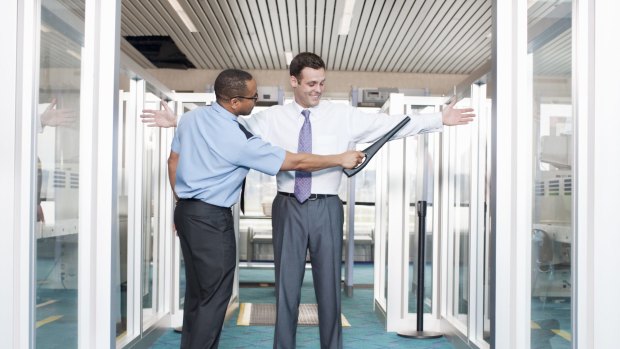This was published 8 years ago
Random explosive trace detection protocols

Airport screening - the price we pay for safer skies.Credit: iStock
RECENTLY, WHEN GOING THROUGH SECURITY AT CHARLES DE GAULLE AIRPORT IN PARIS, I WAS RANDOMLY PICKED FOR A MORE THOROUGH CHECK, WHICH INVOLVED A SEARCH OF THE CONTENTS OF MY CARRY-ON BAG USING A DRUG OR EXPLOSIVE DETECTION SWAB – WHICH THE OFFICER WENT OUT OF SIGHT TO GET. THE RESULT WAS NEGATIVE BUT, IN HINDSIGHT, I THOUGHT THE SWAB SHOULD HAVE BEEN REMOVED FROM A SEALED STERILE PARK IN FRONT OF ME AND MAYBE EVEN WITNESSES. ARE THERE PROTOCOLS IN PLACE REGARDING THESE TESTS?
T. BIRD, BUNDANOON
Random explosive trace detection (ETD) checks are part and parcel of the air traveller's lot these days. These checks are carried out at airports all around the world. If you're selected for an ETD test and you fail to comply you won't be going anywhere, at least not by air. Some explosive detection systems (EDS) require a fresh swab for every test and some don't but I'm not sure that using a fresh swab is necessary to protect the innocent. If the swab returned a positive reading – and false positives are not uncommon – your bags would undergo a far more rigorous examination, which in your case would confirm you were not carrying anything you shouldn't. Nobody likes it much when they're pulled over and their bags are "swabbed" but, if this small inconvenience helps us fly safe, I'm all for it.
Sign up for the Traveller newsletter
The latest travel news, tips and inspiration delivered to your inbox. Sign up now.